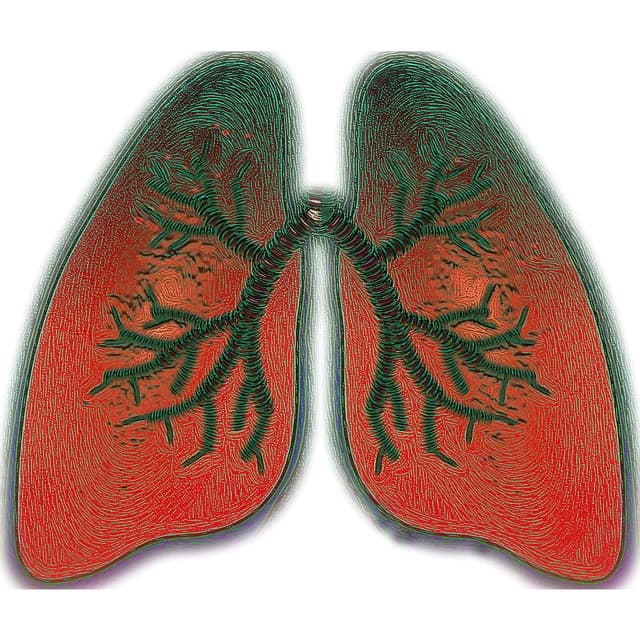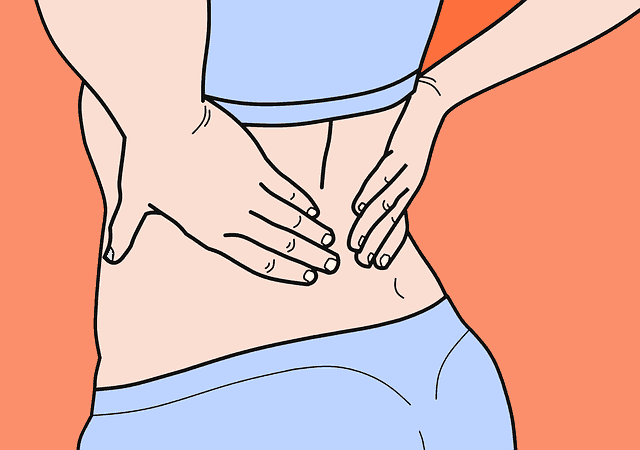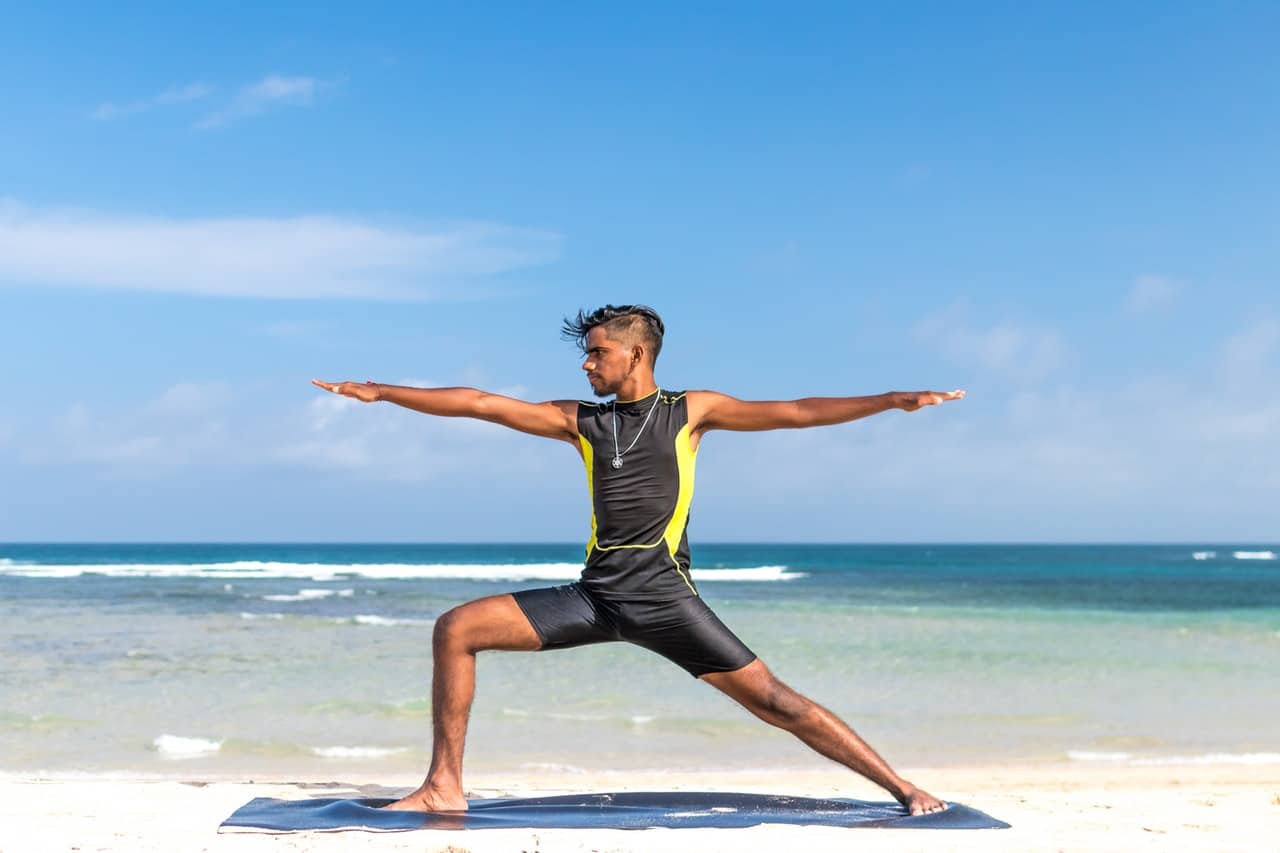To perform yoga without the conscious awareness of the breath is simply a physical exercise. Once we breathe consciously, that is when we are truly performing yoga.
“Yoga” or “Yuj” in Sanskrit means “to join”. And in the ancient way, it is to join the physical and the spiritual bodies.
The linkage of the breaths between movements has many benefits for the body and can be incorporated into any regular practice, beyond a yogic physical exercise!
Contents
The Benefits of Pranayama
If you are a yoga student, I am sure you have heard your teacher direct you to connect back to your breath. Or even to start and end your practice with a breathing technique. These breathing exercises are called pranayamas. If you are interested in learning more, we wrote an article about beginner pranayama techniques.
When you do tune into your breath during a meditation practice, or do deep breathing in yoga classes, you are reaping many unseen health benefits.
This helps your body release facial tissue, emotions, stress, pains, and discomforts. It does this by bringing your nervous system, immune system, and other internal systems to homeostasis.
Yoga classes can help remind you that your breath lives inside of you every moment. And it is readily available to tune into at any point of your day.
The specific benefits we will discuss today include absolute focus, pain relief, healing, and alert-relaxation.
1. Deep Breathing in Yoga To Help With Concentration

Practicing pranayama helps you to refocus on your body.
As the wise B.K.S. Iyengar quotes, “The mind is the king of the senses; but the breath is the king of the mind.”
When your mind starts to trail off and start to think random thoughts, that is when you will probably hear a breathing cue from your instructor.
Some of these cues are “now breathe a little deeper,” “take a longer exhale,” “inhale 1, 2, 3 – exhale 6, 5, 4, 3, 2, 1.”
Yoga teachers have an innate ability to read your mind, so we know when to cue! JUST KIDDING. Actually, we are taught in teacher training how vitally important the breath is to bring any individual back to appreciating each movement. Whether that is on the mat or just a reminder to breathe deeply in life and move onward.
2. Pranayama For Balance
 Prana means energy in Sanskrit, and our breath directly links to our energetic system. This is considered part of our spiritual bodies since we do not physically see the chemical process of energy being created in the body. We only feel or sense it.
Prana means energy in Sanskrit, and our breath directly links to our energetic system. This is considered part of our spiritual bodies since we do not physically see the chemical process of energy being created in the body. We only feel or sense it.
Try this:
- Hold arms parallel to the floor, place your palms together while the fingers face out in front.
- Now open and close them freely. Good!
- Take a few seconds to rest your arms and eyes – maybe smile and breathe deep while you’re at it!
- Arms back to starting position – this time close your eyes and go internal. Now inhale and expand the arms open while giving yourself a slight backbend and looking up to the sky, opening the thyroid. Exhale to come back to starting position, completely relaxing. Do this 3-5 times.
I can guarantee, when you open your eyes after the movement with synchronized breathing that you will feel a lightness between your brows.
By linking those slight movements with pranayama exercises, you are increasing the oxygen flow to your bloodstream and lymphatic system.
That is why after a yoga class, one may be energized, revitalized, or in a relaxed and alert state. In other words, you are balanced.
3. Breathwork for Relaxation
While on the mat, slowing down your breathing will switch you into that relaxed and alert state within your body. This is true whether it be in your own regular practice or inside a classroom.
First, pranayama helps to lower blood pressure which can reduce any stress and anxiety that you have. This can also help heart health.
Also, being relaxed and aware gives you the capability of overcoming the “can’t mentality” through pranayama.
Many people say, “I’m not flexible, I’m terrible at yoga”. I tell them that yoga is not about being flexible and getting into crazy poses. It is about working with where you are at in your body and expanding off of that!
Remember that inhalation is good for the exertion of energy, and exhalation helps with relaxation.
4. Pranayama for Pain Relief
 First, these slow and controlled breathing movements can contribute to reducing pain by allowing the breath to loosen and oxygenate the body’s fluids.
First, these slow and controlled breathing movements can contribute to reducing pain by allowing the breath to loosen and oxygenate the body’s fluids.
Secondly, it teaches you how to release and allow yourself to let go of the pain.
Also, it helps the mind get out of pain by switching back into that relaxed state.
This is important when you’re in a warrior position and getting those life-saving pranayama cues that your legs are so thankful for. Or when you are flowing and know the next move that is coming up based on the instructors cue. And when you are thankful for the reminder to exhale when you’re in a hip-opening stretch. (1)
5. Pranayama for Healing
Before I was a teacher and visited classes, sometimes when I was in a pose and could feel a release with my breath, I would cry.
We may carry emotional trauma that stays stagnant within the body. Utilizing pranayama to help release into a stretch and reach that deep level can expand and heal us in ways which we may only understand internally.
It can even help improve things like depression and anxiety and get us into healthy mental frames.
The moral of the story is that proper breathing is our best healer. (2)
Summary
Universally, spiritually, and physically – the breath helps us to focus on the body and relax into poses and our life.
That is it. It is simple, and there is no need to over complicate it.
So, breathe purposefully into every action. And let it guide your movements. Some other areas that are helpful to concentrate on your breathing include while exercising and while eating. For example, breathing exercises can help ease stomach bacteria and improve the function of your digestive system. Pranayama improves our health in many ways.
So start your practice of pranayama today!
References:
(2) How Breath Control Can Change Your Life
(3) YUJnique Gardens

I am a RYT500 Certified Yoga instructor and my mission on Earth is to promote wellness for all our people and to heal the planet.
